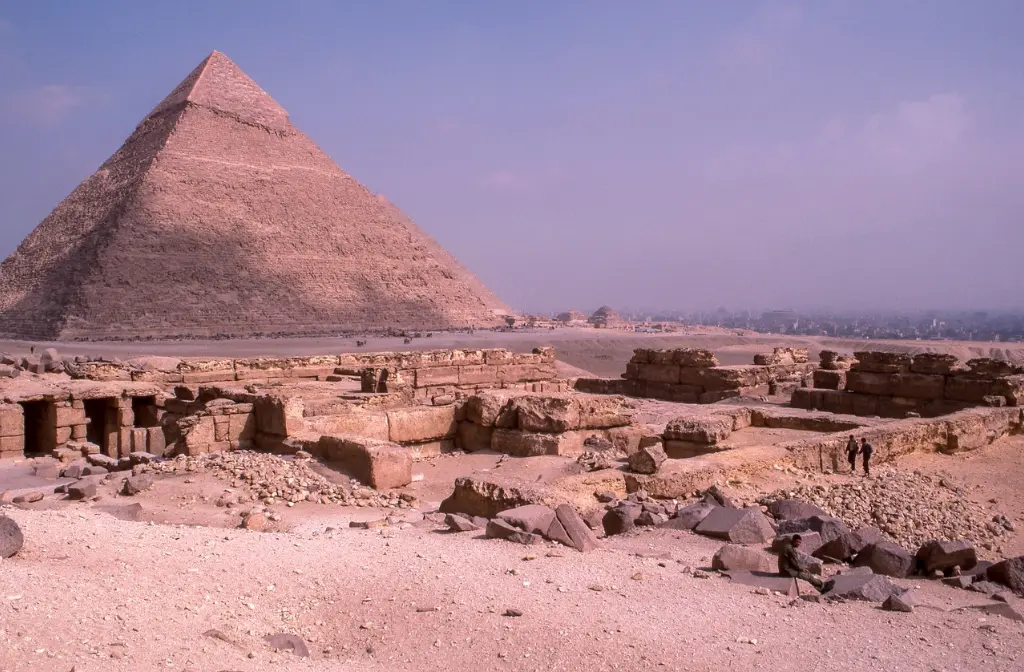Egypt Pyramids: 7 Secrets Behind Ancient Wonders
Table of Contents
The 7 Hidden Secrets of the Egypt Pyramids You Never Knew
The Egypt Pyramids have captivated travelers and historians for centuries. These monumental structures, especially the Great Pyramid of Giza, remain symbols of ancient engineering brilliance, mystique, and profound cultural significance. Have you ever wondered what makes these majestic structures so extraordinary? How did the ancient Egyptians manage to build such towering feats with no modern technology? Or what secrets still lie hidden inside the pyramids? In this article, we’ll uncover 7 little-known facts about the Egypt Pyramids that will change the way you see these ancient wonders forever.
1. The Hidden Chambers Inside the Pyramids
One of the most captivating mysteries of the Egypt Pyramids is the existence of hidden chambers that remain undiscovered or unexplored. Though these structures have been studied for centuries, technology has only recently started to reveal secrets that were once thought to be lost forever.
Undiscovered Passages and Rooms
In 2017, a team of researchers used advanced scanning techniques, such as thermal imaging and muon tomography, to uncover hidden rooms inside the Great Pyramid of Giza. The scans revealed a massive void that had been concealed for thousands of years. This void could be a crucial passage or chamber, adding to the already known complex network of tunnels and rooms. Scientists are still exploring the exact purpose of these chambers. Some believe they could have been built to relieve stress from the massive stones, while others suggest they might hold hidden artifacts or even relics of the pharaoh’s reign.
The Mystery of the Grand Gallery
The Grand Gallery, a 28-meter-long corridor inside the Great Pyramid, has long intrigued historians. Its precise alignment and the shape of its walls suggest it may have had a specific purpose. Some experts believe it could have been an astronomical instrument, designed to align with the stars and serve as a pathway for the soul of the pharaoh to ascend to the heavens. The lack of definitive answers only adds to the allure of this ancient wonder.
2. The Pyramid’s Alignment with the Stars
One of the most remarkable aspects of the Egypt Pyramids is their precise alignment with the stars. Ancient Egyptians were master astronomers, and this is reflected in the way the pyramids were constructed.
Astronomical Precision
The pyramids are aligned almost perfectly with the cardinal points (north, south, east, and west). Researchers believe this alignment was intentional, designed to honor the gods and connect the pharaoh to the heavens. The Great Pyramid, for instance, is aligned so precisely that it’s off by only 0.05 degrees—an astounding feat, considering the ancient Egyptians had no modern tools or technology.
What’s even more astonishing is the pyramids’ connection to the stars. The Egyptians believed that the stars, particularly those in the constellation Orion, were the home of Osiris, the god of the afterlife. The pyramids, especially those at Giza, are believed to have been constructed to align with Orion’s Belt, symbolizing the pharaoh’s journey to the afterlife.
How Did the Ancient Egyptians Achieve This?
Given the limited tools available to them, it’s unclear exactly how the ancient Egyptians achieved such incredible accuracy in aligning the pyramids. Some experts speculate that they used the sun’s shadow to determine the cardinal directions, while others believe they used simple tools like plumb bobs and leveling instruments to measure and mark the angles. What’s certain is that the pyramids’ alignment was no accident—it was a deliberate and sacred design.
3. The Secret Construction Techniques
For centuries, the method used to build the Egypt Pyramids has been the subject of much debate. How did ancient Egyptians manage to move such massive stones, some weighing as much as 80 tons, and stack them so perfectly?
Did Slaves Build the Pyramids?
Contrary to popular belief, the pyramids were not built by slaves. Evidence from the worker’s village found near Giza shows that skilled laborers, often farmers during the off-season, were employed in pyramid construction. These workers were well-fed and housed in nearby camps. This discovery debunked the myth that slaves toiled away under harsh conditions.
Limestone Blocks and Transport Methods
The limestone blocks used in pyramid construction were quarried locally, but the massive granite stones used in the inner chambers had to be transported from Aswan, over 800 kilometers away. To move these enormous stones, the Egyptians likely used a combination of rolling logs, sledges, and water lubrication to reduce friction. One theory suggests that workers may have poured water in front of sledges to create a slurry, making it easier to slide the stones across the sand.
Additionally, there is evidence of ramps—either straight or zig-zagging—constructed alongside the pyramids to haul stones up to higher levels. Recent research suggests that the design of these ramps might have been more sophisticated than previously thought, potentially involving a system of counterweights and levers.
4. The Pyramid’s Original Appearance
When the Egypt Pyramids were first constructed, they were much more magnificent than they appear today. Over thousands of years, much of their original splendor has been lost to the elements.
The White Limestone Casing Stones
Originally, the Great Pyramid and other pyramids were covered in smooth, polished white limestone casing stones. These casing stones reflected sunlight, making the pyramids shine like jewels in the desert sun. The entire structure would have gleamed, visible from miles away. Unfortunately, most of these casing stones were removed during the Middle Ages and used in construction projects elsewhere, leaving behind the rough, stepped core we see today.
The Pyramidion: The Missing Capstone
At the very top of each pyramid was a pyramidion, a small, capstone-like structure. The capstone was likely made of gold or electrum (a natural alloy of gold and silver), and it symbolized the connection between the earth and the heavens. Unfortunately, the pyramidion of the Great Pyramid is long gone, and its exact appearance remains a mystery. Some believe the capstone was taken or destroyed by conquerors, while others think it may have been lost to natural forces like wind and erosion.
5. The Curse of the Pharaohs: Fact or Fiction?
One of the most enduring myths about the Egypt Pyramids is the so-called “Curse of the Pharaohs.” The idea that disturbing the tombs of the pharaohs could bring about a deadly curse has captured the imaginations of people worldwide.
The Legend of the Curse
The most famous case of the curse involves the discovery of Tutankhamun’s tomb by archaeologist Howard Carter in 1922. Shortly after the tomb was opened, several members of the expedition team, including Lord Carnarvon, who funded the excavation, mysteriously died. This led to rumors of a curse that would haunt those who disturbed the pharaoh’s resting place. However, many experts believe the deaths were coincidental, with some attributing them to infections or bacterial contamination from the tomb’s sealed environment.
Scientific Explanations
While the curse is widely regarded as a myth, there may be some truth to the idea that tombs could harbor harmful bacteria or toxins. Ancient tombs were sealed for millennia, and when opened, they could release potentially dangerous microorganisms. In fact, many tombs contain mold, which could have contributed to respiratory illnesses among early explorers.
6. The Pyramids’ Role in Ancient Egyptian Society
The Egypt Pyramids were not just tombs for the pharaohs; they were symbolic structures that played an integral role in ancient Egyptian society and religion.
More Than Just Tombs?
While the primary function of the pyramids was to serve as burial sites for the pharaohs, there is evidence to suggest they may have also served other purposes. Some researchers believe the pyramids were centers for religious rituals, while others argue they may have been used for astronomical observations. The exact role of the pyramids remains the subject of much debate, but it’s clear they were deeply connected to Egypt’s spiritual beliefs.
The Symbolism of Pyramid Shapes
The pyramid shape itself was symbolic. The Egyptians believed that the pyramid, with its triangular form, represented the rays of the sun and the god Ra. It was thought that the pharaoh’s soul would ascend the pyramid to join the gods in the afterlife. The pyramid’s shape was also a visual representation of the power and divine connection of the pharaoh to the cosmos.
7. The Pyramids Today: Preservation and Tourism
The Egypt Pyramids have stood the test of time, but they are not immune to the ravages of weather, tourism, and pollution. Preserving these ancient wonders for future generations is a critical challenge.
Modern Conservation Efforts
In recent years, the Egyptian government, along with international organizations, has implemented various conservation measures to protect the pyramids. Efforts include reinforcing structural integrity, controlling the impact of tourism, and reducing the effects of environmental factors like wind and pollution. However, with millions of visitors each year, the pyramids remain at risk of deterioration.
How to Visit the Pyramids Like an Expert
To get the most out of your visit to the Egypt Pyramids, consider arriving early in the morning or later in the afternoon to avoid crowds. Hiring a knowledgeable local guide will enhance your experience, providing insights into the history, mythology, and significance of these ancient monuments. Don’t forget to explore beyond the Great Pyramid to see the Sphinx and other lesser-known tombs in the area.
Conclusion
The Egypt Pyramids are far more than just ancient tombs—they are enduring symbols of human ingenuity, culture, and mystery. From hidden chambers to astronomical alignments, these wonders continue to captivate the world. As you explore the secrets of the pyramids, remember that their story is far from over. There is still much to discover, and each visit offers a chance to experience the awe and wonder of one of the world’s greatest mysteries.
So, what are you waiting for? Embark on your own journey to the Egypt Pyramids and uncover the secrets that have fascinated humanity for millennia!
FAQs
- How old are the pyramids?
The Great Pyramid of Giza is over 4,500 years old, making it one of the oldest and most well-preserved ancient monuments. - What is inside the pyramids?
Inside the pyramids are burial chambers, passageways, and sometimes treasures, although many of the pyramids have been looted over the centuries. - Can you go inside the pyramids?
Yes, visitors can enter the Great Pyramid and some smaller pyramids, but it’s important to book tickets in advance to avoid overcrowding. - What’s the best way to experience the pyramids?
Arrive early, hire a local guide, and take time to explore both the Great Pyramid and the nearby Sphinx.






